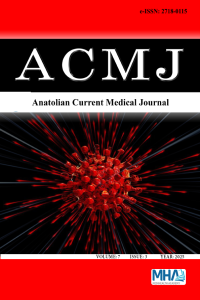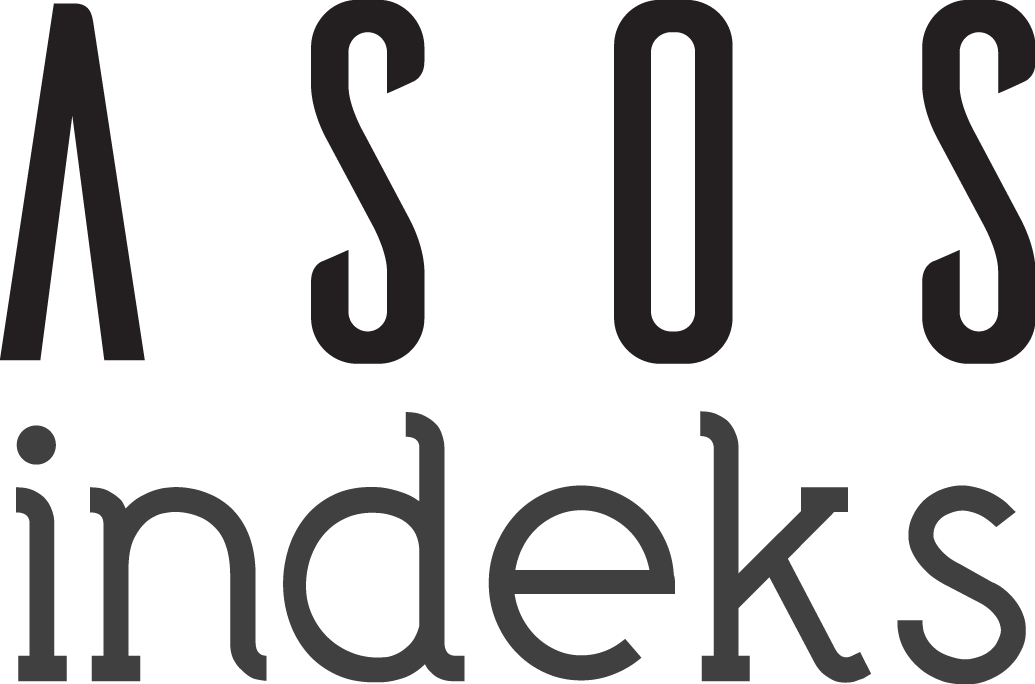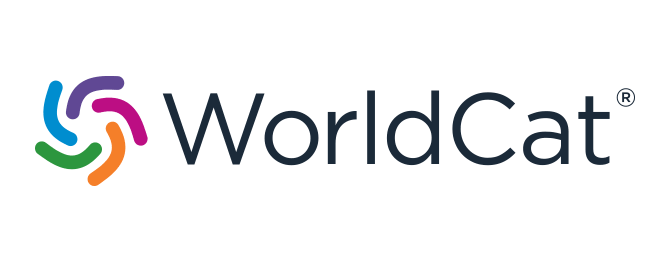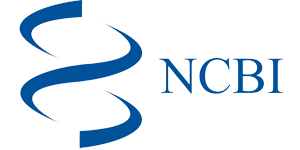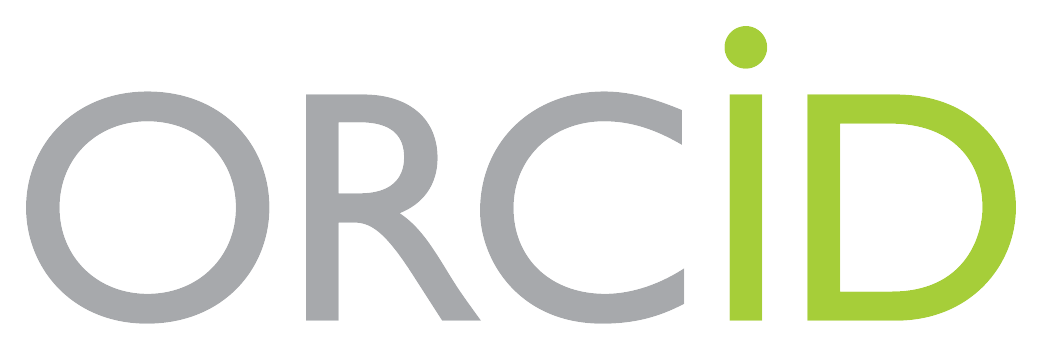Öz
Kaynakça
- Fazzi E, Molinaro A. Visual function and neurodevelopment in children: from neuroscience to rehabilitation. In: Fazzi E, Bianchi PE, eds. Visual impairments and developmental disorders: from diagnosis to rehabilitation. John Libbey Eurotext; 2016.
- Sonksen PM, Dale N. Visual impairment in infancy: impact on neurodevelopmental and neurobiological processes. Dev Med Child Neurol. 2002;44(11):782-791. doi:10.1017/S0012162201002936
- Brambring M. Divergent development of manual skills in children who are blind or sighted. J Vis Impair Blind. 2007;101(4):212-225. doi:10. 1177/0145482X0710100404
- Burton MJ, Ramke J, Marques AP, et al. The Lancet global health commission on global eye health: vision beyond 2020. Lancet Glob Health. 2021;9(4):e489-e551. doi:10.1016/S2214-109X(20)30488-5
- Teoh LJ, Solebo AL, Rahi JS; British Childhood Visual Impairment and Blindness Study Interest Group. Visual impairment, severe visual impairment, and blindness in children in Britain (BCVIS2): a national observational study. Lancet Child Adolesc Health. 2021;5(3):190-200. doi:10.1016/S2352-4642(20)30366-7
- Royal College of Ophthalmologists. Ophthalmic services for children. Published 2021. Accessed December 28, 2024. https://www.rcophth.ac. uk/resources-listing/ophthalmic-services-for-children/
- Çocuklar için özel gereksinim değerlendirmesi hakkında yönetmelik (ÇÖZGER). Resmi Gazete. February 20, 2019 (mükerrer). Accessed December 28, 2024. https://www.resmigazete.gov.tr/eskiler/2019/02/ 20190220-1
- Şahin N, Altun H, Kara B. Özürlü çocuk sağlık kurulu raporlarının değerlendirilmesi. KTD. 2014;15(1):48-53. doi:10.18229/ktd.19378
- Başgül ŞS, Saltık S. Göztepe Eğitim ve Araştırma Hastanesi-Özürlü Çocuk Heyeti’nin 2010 yılı verileri. Göztepe Tıp Dergisi. 2012;27(2):45-49.
- Temeltürk RD, Uygun SD, Canlı M, et al. Çocuklar için özel gereksinim raporu (ÇÖZGER)’na başvuran olguların psikiyatrik tanı ve özel gereksinim düzeylerinin önceki yönetmelikteki tanı ve özür oranları ile karşılaştırılması: retrospektif çalışma. Acta Med Nicomedia. 2023;6(1): 148-156. doi:10.53446/actamednicomedia.1134146
- Kaba D, Çelik S, Çelik H, et al. Transition to the special needs report for children (SNRC): an analysis of referrals to child and adolescent psychiatry over the last three years. Kırıkkale Uni Med J. 2024;26(2):180-186. doi:10.24938/kutfd.1454116
- Büyükavcı R, Büyükavcı MA, Aktürk S. The role of physical medicine and rehabilitation physicians in special needs reports for children. Anadolu Klin. 2022;27(3):275-280. doi:10.21673/anadoluklin.1080152
- Sauer T, Lawrence L, Mayo-Ortega L, et al. Refractive error and ocular findings among infants and young children with severe problem behavior and developmental disabilities. J Ment Health Res Intellect Disabil. 2018;11(4):251-265. doi:10.1080/19315864.2018.1497108
- Kaya Güner E, İnci Bozbıyık D. The role of ophthalmology in the special needs report for children. Ege J Med. 2024;63(1):136-142. doi:10.19161/etd.1312122
- Sayın O, Ağca O, Adam M, Dirican E. Özel gereksinim raporu için başvuran çocuk hastalardaki göz bulguları. MN Oftalmoloji. 2021;28(1): 6-12.
- Mohapatra M, Rath S, Agarwal P, et al. Cerebral visual impairment in children: multicentric study determining the causes, associated neurological and ocular findings, and risk factors for severe vision impairment. Indian J Ophthalmol. 2022;70(12):4410-4415. doi:10.4103/ijo.IJO_801_22
- Teär Fahnehjelm K, Dahl S, Martin L, Ek U. Optic nerve hypoplasia in children and adolescents: prevalence, ocular characteristics and behavioural problems. Acta Ophthalmol. 2014;92(6):563-570. doi:10. 1111/aos.12270
- Dahl S, Wickström R, Ek U, Teär Fahnehjelm K. Children with optic nerve hypoplasia face a high risk of neurodevelopmental disorders. Acta Paediatr. 2018;107(3):484-489. doi:10.1111/apa.14163
- İdil AM. Az gören çocuklarda görsel rehabilitasyon. Turkiye Klinikleri J Ophthalmol-Special Topics. 2011;4(2):73-78.
- Özen Tunay Z, Çalışkan D, İdil A, Öztuna D. Clinical characteristics and low vision rehabilitation methods for partially sighted school-age children. Turk J Ophthalmol. 2016;46(2):68-72. doi:10.4274/tjo.82653
- Donaldson L, O'Brien D, Karas M. A review of the evidence that people with learning disabilities experience eye health inequalities: what policies can better ensure an equal right to sight? Br J Learn Disabil. 2024;52(2):302-311. doi:10.1111/bld.12573
- Sethi VD, Trend U. Early recognition of children with special educational needs: report from a district. Public Health. 1996;110(2):107-108. doi:10.1016/s0033-3506(96)80055-2
Öz
Aims: This study aimed to analyze the most common eye disease diagnoses in children with special needs and their distribution by age and special needs levels.
Methods: Records of 1771 patients evaluated by the health board of our hospital between February 2019 and March 2024 were reviewed. Data from 134 children assessed in the visual function domain were categorized based on special needs levels: presence of special needs (PSN), presence of significant special needs (PSSN), and presence of special conditions (PSC). Diagnoses were analyzed by age groups.
Results: The most common diagnoses among children evaluated for special needs reports were refractive errors (20.8%), optic atrophy (18.6%), and strabismus (14.1%). Among children identified with PSSN, optic atrophy (37.5%) was the most frequent diagnosis, followed by nystagmus (16.7%), hereditary retinal dystrophies (16.7%), and retinopathy of prematurity (ROP) (12.5%). In children identified with PSC, the most common diagnosis was also optic atrophy (37.1%), followed by hereditary retinal dystrophies (14.3%) and congenital glaucoma (11.4%). Of the 25 children diagnosed with optic atrophy, 15 had accompanying conditions such as hydrocephalus, cerebral palsy, and intracranial pressure elevation caused by masses.
Conclusion: The diagnoses in special needs reports for children vary according to the visual function category. However, optic atrophy appears as a frequently observed diagnosis across all age groups. Age-specific diagnostic distributions may serve as a guide in planning early intervention and treatment strategies.
Anahtar Kelimeler
Assessment of healthcare needs optic atrophy vision disorders
Etik Beyan
The study was initiated with the approval of the Selcuk University Medical Faculty Clinical Researches Ethics Committee (Date: 2024, Decision No: 326).
Kaynakça
- Fazzi E, Molinaro A. Visual function and neurodevelopment in children: from neuroscience to rehabilitation. In: Fazzi E, Bianchi PE, eds. Visual impairments and developmental disorders: from diagnosis to rehabilitation. John Libbey Eurotext; 2016.
- Sonksen PM, Dale N. Visual impairment in infancy: impact on neurodevelopmental and neurobiological processes. Dev Med Child Neurol. 2002;44(11):782-791. doi:10.1017/S0012162201002936
- Brambring M. Divergent development of manual skills in children who are blind or sighted. J Vis Impair Blind. 2007;101(4):212-225. doi:10. 1177/0145482X0710100404
- Burton MJ, Ramke J, Marques AP, et al. The Lancet global health commission on global eye health: vision beyond 2020. Lancet Glob Health. 2021;9(4):e489-e551. doi:10.1016/S2214-109X(20)30488-5
- Teoh LJ, Solebo AL, Rahi JS; British Childhood Visual Impairment and Blindness Study Interest Group. Visual impairment, severe visual impairment, and blindness in children in Britain (BCVIS2): a national observational study. Lancet Child Adolesc Health. 2021;5(3):190-200. doi:10.1016/S2352-4642(20)30366-7
- Royal College of Ophthalmologists. Ophthalmic services for children. Published 2021. Accessed December 28, 2024. https://www.rcophth.ac. uk/resources-listing/ophthalmic-services-for-children/
- Çocuklar için özel gereksinim değerlendirmesi hakkında yönetmelik (ÇÖZGER). Resmi Gazete. February 20, 2019 (mükerrer). Accessed December 28, 2024. https://www.resmigazete.gov.tr/eskiler/2019/02/ 20190220-1
- Şahin N, Altun H, Kara B. Özürlü çocuk sağlık kurulu raporlarının değerlendirilmesi. KTD. 2014;15(1):48-53. doi:10.18229/ktd.19378
- Başgül ŞS, Saltık S. Göztepe Eğitim ve Araştırma Hastanesi-Özürlü Çocuk Heyeti’nin 2010 yılı verileri. Göztepe Tıp Dergisi. 2012;27(2):45-49.
- Temeltürk RD, Uygun SD, Canlı M, et al. Çocuklar için özel gereksinim raporu (ÇÖZGER)’na başvuran olguların psikiyatrik tanı ve özel gereksinim düzeylerinin önceki yönetmelikteki tanı ve özür oranları ile karşılaştırılması: retrospektif çalışma. Acta Med Nicomedia. 2023;6(1): 148-156. doi:10.53446/actamednicomedia.1134146
- Kaba D, Çelik S, Çelik H, et al. Transition to the special needs report for children (SNRC): an analysis of referrals to child and adolescent psychiatry over the last three years. Kırıkkale Uni Med J. 2024;26(2):180-186. doi:10.24938/kutfd.1454116
- Büyükavcı R, Büyükavcı MA, Aktürk S. The role of physical medicine and rehabilitation physicians in special needs reports for children. Anadolu Klin. 2022;27(3):275-280. doi:10.21673/anadoluklin.1080152
- Sauer T, Lawrence L, Mayo-Ortega L, et al. Refractive error and ocular findings among infants and young children with severe problem behavior and developmental disabilities. J Ment Health Res Intellect Disabil. 2018;11(4):251-265. doi:10.1080/19315864.2018.1497108
- Kaya Güner E, İnci Bozbıyık D. The role of ophthalmology in the special needs report for children. Ege J Med. 2024;63(1):136-142. doi:10.19161/etd.1312122
- Sayın O, Ağca O, Adam M, Dirican E. Özel gereksinim raporu için başvuran çocuk hastalardaki göz bulguları. MN Oftalmoloji. 2021;28(1): 6-12.
- Mohapatra M, Rath S, Agarwal P, et al. Cerebral visual impairment in children: multicentric study determining the causes, associated neurological and ocular findings, and risk factors for severe vision impairment. Indian J Ophthalmol. 2022;70(12):4410-4415. doi:10.4103/ijo.IJO_801_22
- Teär Fahnehjelm K, Dahl S, Martin L, Ek U. Optic nerve hypoplasia in children and adolescents: prevalence, ocular characteristics and behavioural problems. Acta Ophthalmol. 2014;92(6):563-570. doi:10. 1111/aos.12270
- Dahl S, Wickström R, Ek U, Teär Fahnehjelm K. Children with optic nerve hypoplasia face a high risk of neurodevelopmental disorders. Acta Paediatr. 2018;107(3):484-489. doi:10.1111/apa.14163
- İdil AM. Az gören çocuklarda görsel rehabilitasyon. Turkiye Klinikleri J Ophthalmol-Special Topics. 2011;4(2):73-78.
- Özen Tunay Z, Çalışkan D, İdil A, Öztuna D. Clinical characteristics and low vision rehabilitation methods for partially sighted school-age children. Turk J Ophthalmol. 2016;46(2):68-72. doi:10.4274/tjo.82653
- Donaldson L, O'Brien D, Karas M. A review of the evidence that people with learning disabilities experience eye health inequalities: what policies can better ensure an equal right to sight? Br J Learn Disabil. 2024;52(2):302-311. doi:10.1111/bld.12573
- Sethi VD, Trend U. Early recognition of children with special educational needs: report from a district. Public Health. 1996;110(2):107-108. doi:10.1016/s0033-3506(96)80055-2
Ayrıntılar
| Birincil Dil | İngilizce |
|---|---|
| Konular | Göz Hastalıkları |
| Bölüm | Research Articles |
| Yazarlar | |
| Yayımlanma Tarihi | 30 Mayıs 2025 |
| Gönderilme Tarihi | 7 Ocak 2025 |
| Kabul Tarihi | 25 Mart 2025 |
| Yayımlandığı Sayı | Yıl 2025 Cilt: 7 Sayı: 3 |
TR DİZİN ULAKBİM and International Indexes (1b)
Interuniversity Board (UAK) Equivalency: Article published in Ulakbim TR Index journal [10 POINTS], and Article published in other (excuding 1a, b, c) international indexed journal (1d) [5 POINTS]
Note: Our journal is not WOS indexed and therefore is not classified as Q.
You can download Council of Higher Education (CoHG) [Yüksek Öğretim Kurumu (YÖK)] Criteria) decisions about predatory/questionable journals and the author's clarification text and journal charge policy from your browser. https://dergipark.org.tr/tr/journal/3449/file/4924/show
Journal Indexes and Platforms:
TR Dizin ULAKBİM, Google Scholar, Crossref, Worldcat (OCLC), DRJI, EuroPub, OpenAIRE, Turkiye Citation Index, Turk Medline, ROAD, ICI World of Journal's, Index Copernicus, ASOS Index, General Impact Factor, Scilit.The indexes of the journal's are;
The platforms of the journal's are;
|
The indexes/platforms of the journal are;
TR Dizin Ulakbim, Crossref (DOI), Google Scholar, EuroPub, Directory of Research Journal İndexing (DRJI), Worldcat (OCLC), OpenAIRE, ASOS Index, ROAD, Turkiye Citation Index, ICI World of Journal's, Index Copernicus, Turk Medline, General Impact Factor, Scilit
Journal articles are evaluated as "Double-Blind Peer Review"
All articles published in this journal are licensed under a Creative Commons Attribution 4.0 International License (CC BY 4.0)


